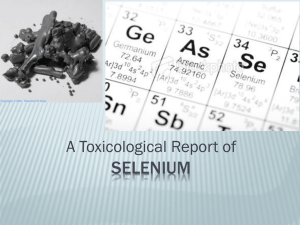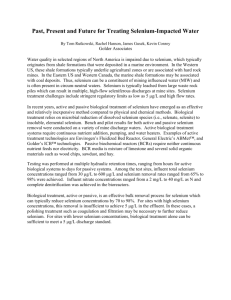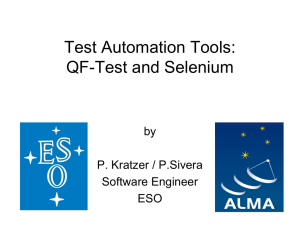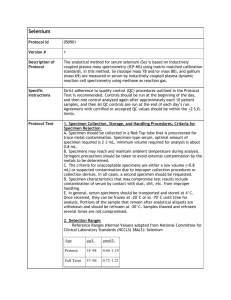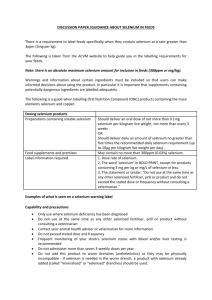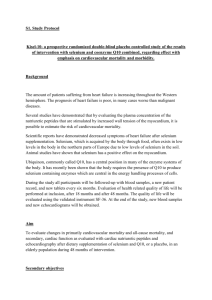Size Characterization of Selenium Nanoparticles Prepared from
advertisement
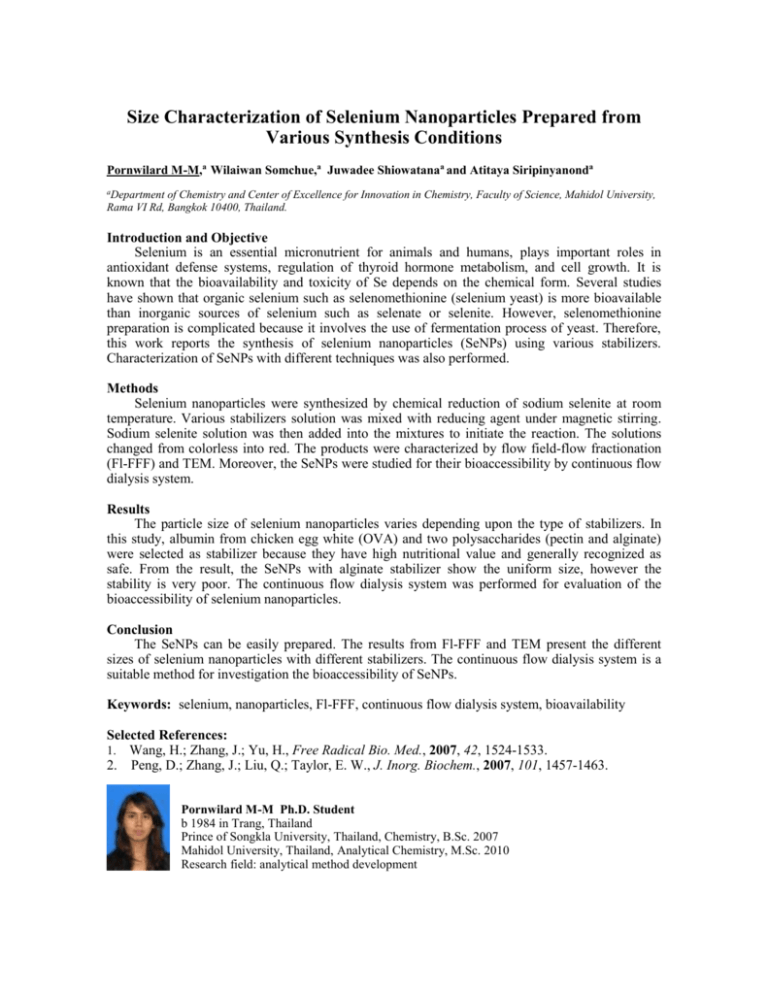
Size Characterization of Selenium Nanoparticles Prepared from Various Synthesis Conditions Pornwilard M-M,a Wilaiwan Somchue,a Juwadee Shiowatanaa and Atitaya Siripinyanonda aDepartment of Chemistry and Center of Excellence for Innovation in Chemistry, Faculty of Science, Mahidol University, Rama VI Rd, Bangkok 10400, Thailand. Introduction and Objective Selenium is an essential micronutrient for animals and humans, plays important roles in antioxidant defense systems, regulation of thyroid hormone metabolism, and cell growth. It is known that the bioavailability and toxicity of Se depends on the chemical form. Several studies have shown that organic selenium such as selenomethionine (selenium yeast) is more bioavailable than inorganic sources of selenium such as selenate or selenite. However, selenomethionine preparation is complicated because it involves the use of fermentation process of yeast. Therefore, this work reports the synthesis of selenium nanoparticles (SeNPs) using various stabilizers. Characterization of SeNPs with different techniques was also performed. Methods Selenium nanoparticles were synthesized by chemical reduction of sodium selenite at room temperature. Various stabilizers solution was mixed with reducing agent under magnetic stirring. Sodium selenite solution was then added into the mixtures to initiate the reaction. The solutions changed from colorless into red. The products were characterized by flow field-flow fractionation (Fl-FFF) and TEM. Moreover, the SeNPs were studied for their bioaccessibility by continuous flow dialysis system. Results The particle size of selenium nanoparticles varies depending upon the type of stabilizers. In this study, albumin from chicken egg white (OVA) and two polysaccharides (pectin and alginate) were selected as stabilizer because they have high nutritional value and generally recognized as safe. From the result, the SeNPs with alginate stabilizer show the uniform size, however the stability is very poor. The continuous flow dialysis system was performed for evaluation of the bioaccessibility of selenium nanoparticles. Conclusion The SeNPs can be easily prepared. The results from Fl-FFF and TEM present the different sizes of selenium nanoparticles with different stabilizers. The continuous flow dialysis system is a suitable method for investigation the bioaccessibility of SeNPs. Keywords: selenium, nanoparticles, Fl-FFF, continuous flow dialysis system, bioavailability Selected References: 1. Wang, H.; Zhang, J.; Yu, H., Free Radical Bio. Med., 2007, 42, 1524-1533. 2. Peng, D.; Zhang, J.; Liu, Q.; Taylor, E. W., J. Inorg. Biochem., 2007, 101, 1457-1463. Pornwilard M-M Ph.D. Student b 1984 in Trang, Thailand Prince of Songkla University, Thailand, Chemistry, B.Sc. 2007 Mahidol University, Thailand, Analytical Chemistry, M.Sc. 2010 Research field: analytical method development

